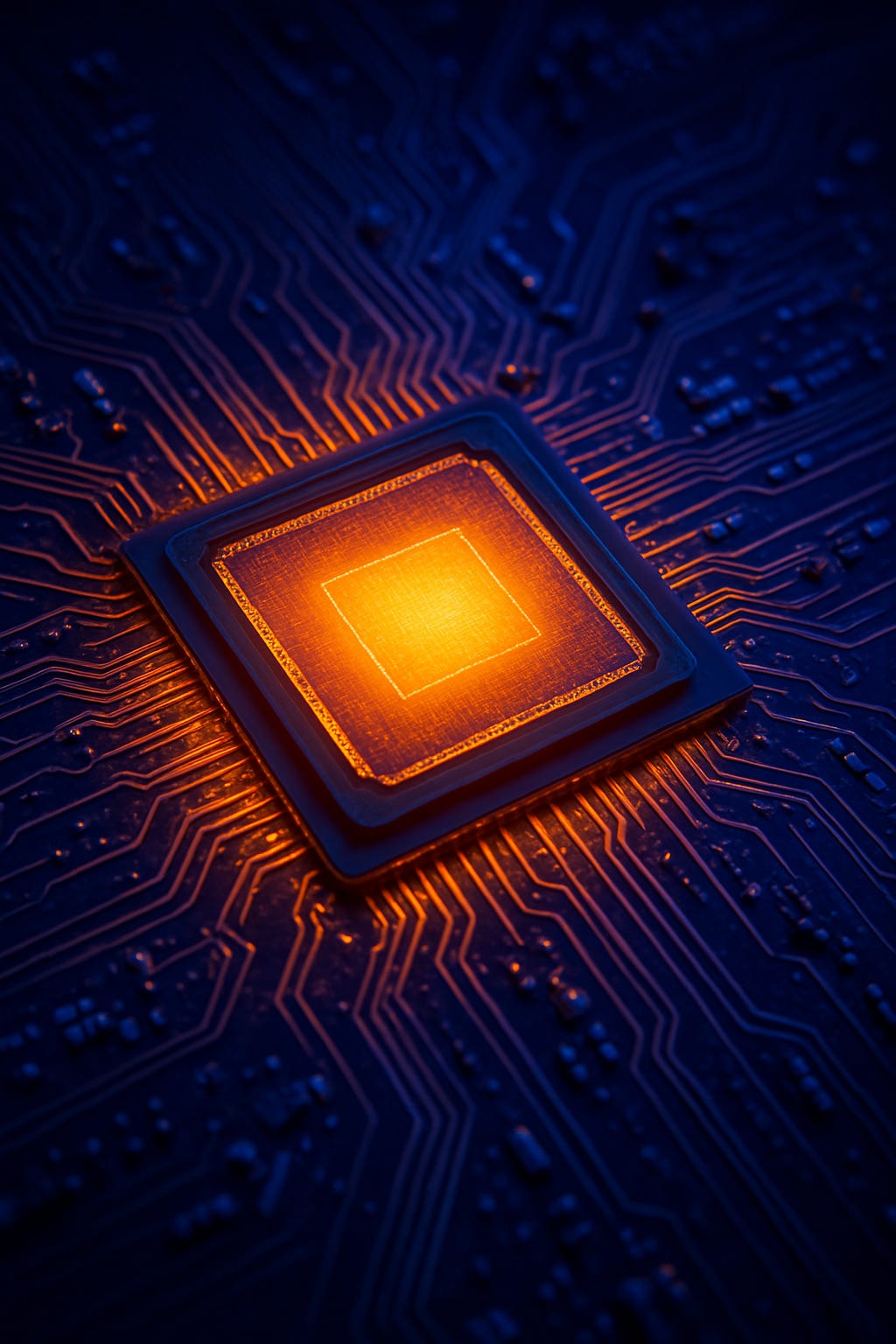"The AI Stack." Article 1: The Silicon Heart (The Hardware Layer)
By Michael Apemah, in our new series "The AI Stack: Forging the Engine of a New World."
The AI revolution, for all its talk of intelligent machines and god-like models, did not begin in a software lab. It began in a gamer’s basement. It was sparked by a simple, powerful realization: the same chips that were designed to render beautiful, complex 3D worlds—Graphics Processing Units (GPUs)—were astonishingly good at the massively parallel math required for deep learning.
This realization turned one company, NVIDIA, into a global superpower and ignited a war for the very soul of computing. This is the story of the Silicon Heart, the hardware layer upon which the entire AI world is built.
The King and His Moat: How NVIDIA Built a Fortress
For years, CPUs from companies like Intel were the undisputed brains of the computing world. They are masters of serial tasks—doing one complex thing after another, very quickly. But AI training is a different beast. It requires doing millions of simple things all at once. This is what a GPU is born to do.
NVIDIA’s genius was not just in building powerful GPUs. Their true, unassailable moat is a piece of software called CUDA. CUDA is a programming language that makes it relatively easy for developers to unlock the parallel processing power of NVIDIA’s GPUs.
Over a decade, CUDA became the industry standard. An entire generation of AI researchers and developers grew up speaking its language. This created a fortress: even if a competitor built a slightly better chip, it was useless without the software ecosystem to run it. NVIDIA doesn’t just sell hardware; they sell a complete, integrated platform.
The Challengers: Armies at the Gates
NVIDIA’s dominance, and the astronomical price of its H100 and Blackwell GPUs, has created a powerful incentive for rebellion. Three major armies are now storming the walls of Fortress NVIDIA:
The Arch-Rival (AMD): AMD is NVIDIA’s most direct competitor. Their MI300 series of accelerators are formidable, offering incredible performance and memory capacity. AMD’s challenge is not in hardware, but in software. They are in a desperate race to make their own software platform, ROCm, a viable alternative to CUDA. Every enterprise that adopts ROCm is a crack in NVIDIA’s moat.
The Cloud Rebellion (Google, Amazon, Microsoft): The Cloud Service Providers (CSPs) are NVIDIA’s biggest customers, and they are tired of writing blank checks. They have begun designing their own custom AI chips to break free. Google has its TPUs (Tensor Processing Units), Amazon has Trainium and Inferentia, and Microsoft has Maia. Their goal is to offer “good enough” performance at a much lower cost for their cloud customers.
The Sleeping Giant (Intel): This is where my old home comes into play. Intel is waging a multi-pronged assault. For high-end training, they have the Gaudi series of accelerators, acquired from Habana Labs. Their strategy is to compete on price-performance, offering a powerful, open-standards-based alternative to the expensive, proprietary NVIDIA ecosystem. Simultaneously, they are embedding powerful AI inference capabilities (like AMX) directly into their mainstream Xeon CPUs, arguing that for many day-to-day AI tasks, you don’t need a separate, expensive GPU.
The Foundation of the War: The Foundry Conflict
Here is the ground truth that my time in the fab taught me: none of these incredible designs matter if you can’t build them. This entire hardware war is built on the foundation of the foundry war between TSMC and Intel Foundry.
Today, nearly every advanced AI chip in the world—from NVIDIA, AMD, and even the cloud giants—is built in a TSMC fab. This gives TSMC immense power and makes the entire AI supply chain dangerously dependent on a single company in a single location.
This is Intel Foundry’s ultimate opportunity. The success or failure of their 18A process, which we discussed in our last series, is not just about Intel. It is about whether a credible, US-based alternative can emerge. A successful Intel Foundry would give the challengers—AMD, Google, Amazon—a second source for their designs, fundamentally altering the balance of power in the entire industry.
The Silicon Heart of AI is the most hotly contested real estate on the planet. The war for hardware dominance is a brutal, expensive fight, but it is only the first layer of the AI Stack. In our next chapter, we will explore what runs on these powerful hearts: the Ghost in the Machine, the world of AI models themselves.


